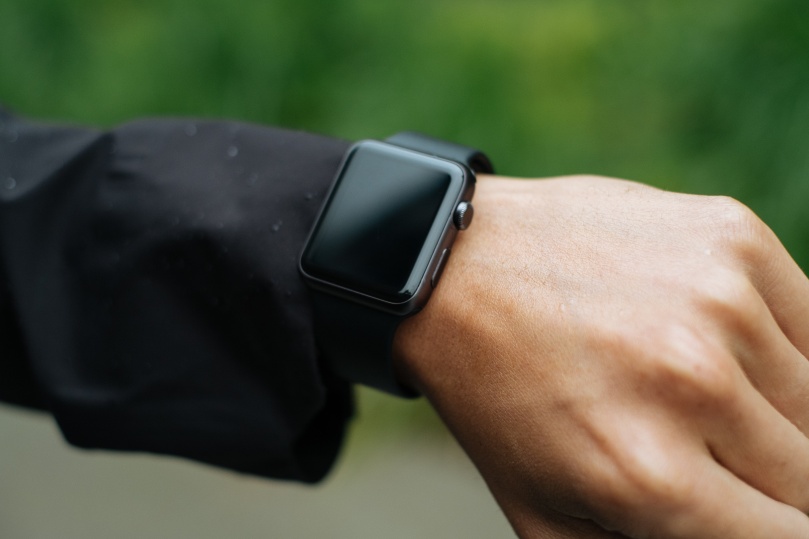Table of Contents
An interview with Thomas Griffiths, Senior Associate and Patent Attorney at Spruson & Ferguson
Intel lectual Property (IP) protection is crucial for your business’ competitive advantage and long-term product development goals. It is through securing protection for ideas, inventions and creations, that you will be able to leverage on your innovations and make this a viable part of your livelihood. How should your business go about acquiring and enforcing your IP rights?
lectual Property (IP) protection is crucial for your business’ competitive advantage and long-term product development goals. It is through securing protection for ideas, inventions and creations, that you will be able to leverage on your innovations and make this a viable part of your livelihood. How should your business go about acquiring and enforcing your IP rights?
We sat down with Thomas Griffiths, Senior Associate and Patent Attorney at Spruson & Ferguson, to learn more.
1. What are the most common questions you get regarding intellectual property (IP)?
“This idea isn’t patentable… or is it?”
Many inventions result from a series of iterative developments. Often, inventors look at those developments and don’t think any particular one of them is particularly innovative. So they fall into the misbelief they cannot protect their ideas.
Many inventions are made up of incremental developments that, individually, may not seem like much but the overall effect is significant.
 So, if you have a technology with a saleable point of difference then it will often constitute something that is patentable. So, if you have a technology with a saleable point of difference then it will often constitute something that is patentable. |
The other question often asked is: “Is it worth patenting?”
There is a reason big businesses file patent applications, and also why the technologies of small businesses are purchased by big businesses. IP protection can be a barrier to market entry for anyone except the IP rights holder.
In a nutshell, if you have a commercially useful technological point of difference (i.e. a reason somebody would want your technology) then you likely have something worth patenting that is also patentable.
2. What do business owners normally overlook and what are the implications?
The main ones are 1) publication and 2) value.
If an idea is published before a patent application is filed, many countries will not grant you valid IP protection for that idea. Particularly for a startup, this is difficult. IP protection can be costly and revenue is sometimes necessary to afford it. It is a difficult one… If you market your technology before filing for IP protection then you can often no longer protect it. There are some limited exceptions given in a few countries, such as the U.S. and Australia, but the general gist is that it cannot be protected once published.
On the value side, IP applicants are asking governments for what is a sort of temporary statutory monopoly – it is the right to stop others from dealing in the technology or design you have protected. Most governments are pro-competition so they don’t give out such monopolistic rights readily. So the cost is pretty reasonable when considering that it can purchase a 20-year right to stop people competing in a particular technology.
3. One can obtain a patent for an invention that is novel, and this can include both products and processes. In general, for an invention to be patentable, it must be new, involve an inventive step and have an industrial application (source: IPOS). How does an inventor know whether his invention is new and different from anything that currently exists and therefore qualifies to be patented?
Unfortunately, there is no way to answer that question with absolute certainty. With 7 billion or so people on the planet, new technologies are being developed every day. Only a small amount of that new technology will be discoverable when trying to assess whether a technology is new and inventive.
That said, the main way for people to assess whether their idea is new and inventive is to conduct a prior art search. There are good public databases for this, and firms that conduct these searches.
The faster the technological space moves – take software-based inventions and medical devices for example – the lower the likelihood of locating relevant prior art. Patent applications typically aren’t published for about 18 months. Hence, patent applications filed in the last 18 months often cannot be located by searching.
In reality, the inventor is often an expert in the field and has a pretty good knowledge of what other technologies are out there. Inventors also typically develop their ideas with a particular problem or market in mind that existing technology doesn’t address. If nothing is out there that currently addresses the particular problem or targets that market, then a new technology that does so has a reasonable shot at being novel and inventive.
There is no uniform, hard and fast rule on what is industrially applicable. It differs a little bit from country to country. That said, in general, most things that are inventions are also industrially applicable – in other words, they are technical and have some sort of commercial application. In Singapore, certain methods of treatment of a human or animal body are excluded from industrial applicability, as are certain methods of diagnosis performed on human or animal bodies.
4. How much of my process or product must be developed before I can register for a patent?
None.
Most patent applications are speculative. The inventors simply need to be able to tell a skilled person – generally an expert in their field similar to themselves – how to put the invention together. In legalese, the patent specification needs to say how to “perform” the invention.
No prototype. No testing. Nothing else is needed.
This is to be distinguished from a wish list. I can say “I have a great idea. How about I build a glass elevator to the moon as a low-cost alternative to Virgin’s space program?” But unless I can say how I would build such an elevator and how it would work, I don’t have enough for a patent application.
5. What does the process of registering for a patent look like? How do I get started?
You need to first identify that whatever technology you’re developing has a point of difference that is commercially viable. Then go and speak to a patent attorney. The main point at the outset is knowing what your invention is. You can then leave the rest of the process to the attorney.
The process of applying for a patent can be complex. It also depends on the needs of the patent applicant. That said, the *very general* overview is the process includes the following stages:
- Drafting a patent specification
- Filing a patent application with that specification
- Having the patent application examined
- Getting a granted patent
- Paying renewal/annuity fees (these simply allow governments to purge their patent register of patent rights that patentees no longer want to maintain)
6. What happens when someone infringes my copyright/patent/trademark? Is there a way to take action and protect my IP rights that doesn’t involve going to court?
Nowadays, most IP disputes can be kept out of court. In general, the start of the process would be a “Cease and Desist” letter. That letters identifies the rights that are infringed and what the other party is doing to infringe those rights. It can also say “Offer up any infringing products you have made, or destroy them” and “I would like an account of profits for infringements to date”.
That letter often works.
If that letter does not work, then there are other alternative dispute resolution mechanisms, such as mediation, that can avoid court-time.
You can also consider licensing your IP. In effect, this turns a potential infringer into a paying client.
7. When potential clients consult you on whether their inventions can be patented, what can they expect during a first meeting? What should they prepare beforehand?
The first meeting is really an information gathering session for both parties. We don’t know what the invention is and the inventors are often unaware of how the patent process works, the costs and timeframes.
We host initial meetings free-of-charge. So people can come without fear that they will receive an invoice or have any ongoing obligation to us. We will then guide the inventors through the collection of any additional information that is needed to enable us to draft a patent application.
8. Is there anything else that startups should know that we haven’t covered or advice for business owners looking to protect their IP rights?
Not really. In brief, keep your technology and your designs secret until you have filed for IP protection. If you can’t, try to ensure whomever you need to tell understands the idea, technology or design is to be kept confidential.
Create a Confidentiality Agreement for free with Zegal
Start a free trial. No minimum commitment, no credit card required.
With that in mind, go and speak to a patent attorney. For Spruson & Ferguson, that chat will be free and can be used to answer questions that relate to the specific invention in question.
Still have questions about Intellectual Property protection?
Related reading: Protect your IP
Thoma s Griffiths is a Senior Associate of Spruson & Ferguson, based permanently in Singapore.
s Griffiths is a Senior Associate of Spruson & Ferguson, based permanently in Singapore.
Thomas’ practice primarily involves the preparation, drafting and prosecution of patent applications, advice in relation to patent validity and enforcement, patent strategy and patent infringement advice. Thomas has also been involved in large-scale patent litigation, patent litigation support, evidence strategy, and revocation and invalidation strategy before the Federal Court of Australia.
Thomas practices in the field of electrics, electronics and computer science technologies, focusing on medical devices, apps & software, semiconductors, solar cells, data transformation and e-commerce technologies.
Prior to joining the firm, Thomas worked for several years in the patent group of one of Australia’s major patent law firms and prior to that worked in the mining industry as an engineer.
Thomas is a qualified Australian and New Zealand Patent Attorney. His technical qualifications include:
- Bachelor of Engineering (Mechatronics)(Hons),
- Bachelor of Computer Science and
- Master of Intellectual Property Laws,
all from the University of Melbourne.
Thomas can be contacted at thomas.griffiths@spruson.com
Alex Tanglao
Alex Tanglao is a seasoned professional with expertise in startups, legal technology, and business management. Alex has held leadership roles, including Director of Strategy & Operations at Elevate Digital, where he streamlined operations and managed teams, and Director of Ecommerce at Allies of Skin, driving global growth. Alex served as Marketing Manager at Zegal, driving legaltech and educating businesses on startup legal topics. With a background in content strategy from LawPath, Alex combines a deep understanding of legal services with operational excellence and innovative marketing strategies to help businesses thrive in dynamic, fast-paced environments.






